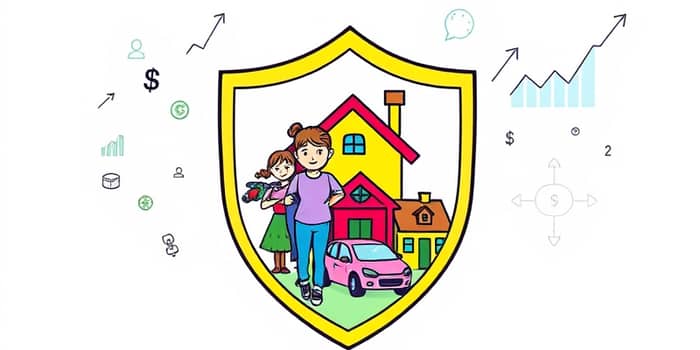
Insurance is more than just a contract; it represents financial protection against unexpected risks. From natural disasters to sudden health crises, insurance provides a vital safety net that helps people and businesses recover and rebuild.
By pooling resources and sharing risks, insurance companies create stability in volatile times. This mechanism underpins modern economies, supporting families, enterprises, and communities when adversity strikes.
In this comprehensive guide, we explore the core concepts, major policy types, industry trends, and practical considerations to help you choose the best coverage for your needs.
Insurance products are designed to address specific exposures. Understanding each category enables you to tailor coverage effectively.
The global insurance market is experiencing sustained expansion. In 2024, the industry grew by an estimated 8.6%, and over the next decade, premiums are projected to rise by EUR 5.3 trillion.
Asia, particularly China, leads life insurance expansion, while the United States drives health premium growth. North America contributes roughly 40% of the rise in property and casualty lines.
Auto insurance rates continue rising due to inflation in repair costs, more frequent severe weather events, and a growing number of uninsured drivers that shift costs onto policyholders.
Climate change and technological advances are reshaping risk landscapes. Increased flooding in non-coastal regions is driving demand for flood coverage beyond traditional homeowner policies. Meanwhile, emerging vulnerabilities in cybersecurity and liability for AI use mark new frontiers of risk management.
Selecting the right insurance requires careful evaluation of policy details. Every plan varies in costs and coverage scope, so understanding the nuances is vital.
Life stage, financial goals, and risk tolerance should guide your choices. Young families often prioritize term life and health coverage, while older individuals may lean toward permanent life policies or annuities to preserve wealth.
Shopping around, leveraging employer benefits, and considering supplemental standalone plans can optimize coverage and cost. Always request sample policies to compare the fine print.
Insurance functions as help individuals, families, and businesses recover from setbacks, but systemic challenges like climate change and aging populations require collaborative solutions between public entities and private insurers.
Governments often act as reinsurers of last resort, especially after catastrophes like hurricanes or floods. Yet, underinvestment in adaptation and pension reforms risks undermining long-term sustainability.
Insurers are increasingly shifting toward risk mitigation, offering services such as loss-prevention consulting and disaster resilience planning. Customers now expect protection that extends beyond payouts to proactive guidance and support.
Customers increasingly expect holistic solutions that address both immediate recovery and future resilience. By fostering innovation and embracing digital transformation, the industry can meet evolving demands.
Insurance remains an indispensable pillar of modern society. As **new risks emerge**, technology transforms services, and consumer expectations rise, choosing the right mix of products is more important than ever.
By understanding policy types, monitoring industry trends, and weighing personal needs, you can secure coverage that protects what matters most: your life, loved ones, property, and livelihood. Embrace insurance not only as a financial tool but as a partner in building a resilient future.
References













